Disclosure: This post may contain affiliate links, meaning we get a commission if you decide to make a purchase through our links, at no cost to you. See our full disclosure here.
A Berrylicious Adventure Awaits!
Imagine stepping onto your patio in your robe and slippers and plucking plump, juicy blueberries straight from the plant. You notice their sweet fragrance filling the air as you sit at the patio table and enjoy your freshly picked blueberries for breakfast.
Blueberries aren’t just for those with a sprawling garden or acres of land–you can experience the joys of blueberry gardening even if you live in an apartment or have limited outdoor space. Welcome to the world of container gardening for blueberry plants, where a bountiful harvest is just a pot away!
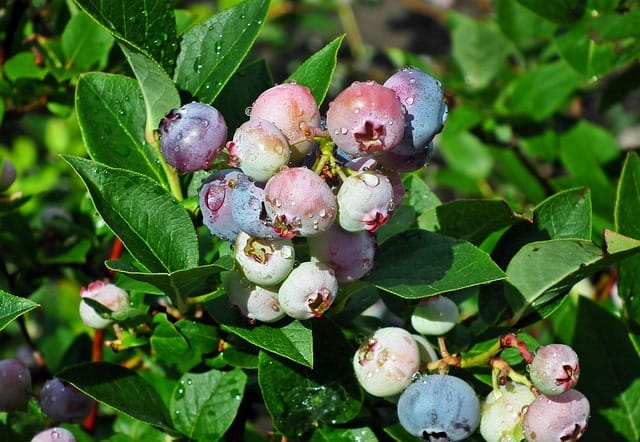
In this blog post, we’ll embark on a berrylicious adventure, exploring the ins and outs of growing blueberries in containers. Whether you’re a seasoned gardener or a newbie with a green thumb in the making, container gardening offers a versatile and accessible approach to cultivating these delightful fruits.
Partnering with DirtDivaDiaries.com, I’m thrilled to share my expertise and guide you through planting, caring for, and harvesting blueberries in containers. Together, we’ll unlock the secrets to a thriving blueberry garden that will tantalize your taste buds and bring a burst of color to your space.
My name is Kevin Mansoor, and I absolutely love helping people grow blueberries. You might even say I wrote the book on the subject—because I did. You can check it out on our book’s page here.
So, if you’re ready to embark on a fruitful journey, grab your gardening gloves, and let’s dive into container gardening for blueberries!
Understanding the Basics: Setting the Stage for Success
Before we discuss container gardening for blueberry plants, let’s lay the groundwork for a thriving haven. Like any other plant, blueberries have specific needs that must be met to ensure a bountiful harvest.
Sunlight: The Elixir of Life for Blueberries
Blueberries are sun-worshippers! They thrive in full sun, which means they need 6-8 hours of direct daily. So, when choosing a location for your container garden, opt for a sunny spot on your patio, balcony, or deck. If you live in a hot climate, a little afternoon shade won’t hurt, but make sure your blueberries get their daily dose of sunshine.
Soil Acidity: The Key to Thriving Blueberry Plants
Blueberries are picky about soil pH. They prefer acidic soil with a pH range of 4.5-5.5. This might sound technical, but don’t worry—it’s easy to achieve! You can purchase a soil testing kit to check the pH of your existing soil or buy a pre-mixed potting soil specifically designed for acid-loving plants like blueberries.
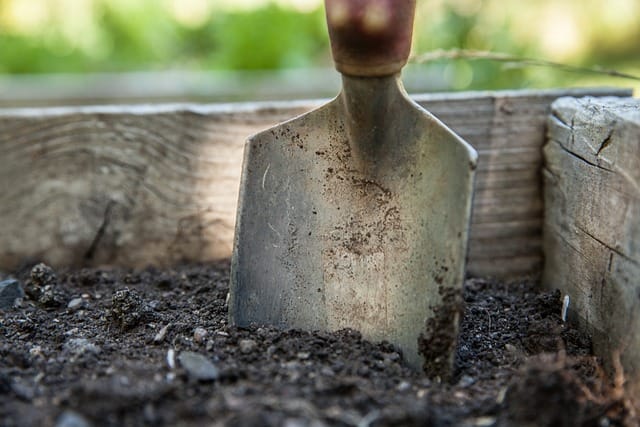
I never test my soil myself. Maybe I shouldn’t admit that, but I make sure I use a soil acidifier and an acid-based fertilizer each year. I should check, but that combination has always provided me with great harvests.
Choosing the Right Blueberry Varieties: Matching Your Preferences and Climate
Not all blueberry varieties are created equal! Some are better suited for warmer climates, while others thrive in cooler regions. When selecting blueberry plants for your container garden, consider your local climate and choose varieties that perform well in your area. You can also choose between different blueberry types based on your taste preferences, such as high-bush, low-bush, or rabbiteye blueberries.
Dwarf blueberries are a fantastic choice for container gardening, offering a compact and manageable way to enjoy fresh, homegrown berries. Top Hat and Sunshine Blue are popular dwarf varieties that thrive in pots, making them ideal for patios, balconies, or indoors with sufficient sunlight.
Top Hat lives up to its name. It is a compact variety that typically reaches a height of 18-24 inches, making it perfect for smaller spaces and container gardening. Sunshine Blue is another excellent dwarf variety, growing to a height of 2-3 feet. It is slightly taller than Top Hat but still suitable for pots and limited spaces.
These dwarf blueberries offer the same delicious and nutritious berries as their larger counterparts, but in a more compact and manageable form. Their smaller size makes them easier to care for and harvest, and their adaptability to containers opens up blueberry growing to those with limited space or no traditional garden.
By understanding these basic requirements, you’ll be well on your way to creating a blueberry paradise in your container garden. So, let’s move on to the next step and select the perfect container for your plants!
Selecting the Perfect Container
Now that we’ve covered the basics, let’s talk about the star of the show: the container! Choosing the correct container for blueberry plants is crucial for their growth and productivity. Here are a few factors to consider:
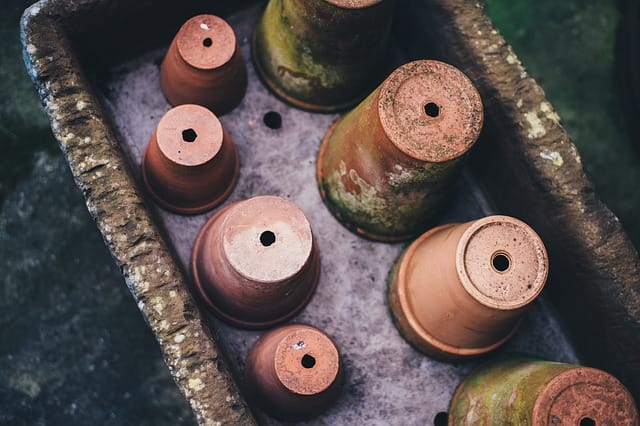
Size Matters: Choosing a Container That Accommodates Growth
Blueberry plants need room to spread their roots and grow. When selecting a container, opt for one at least 18-24 inches in diameter and 12-16 inches deep. This will provide ample space for your blueberry plants to flourish. Remember, bigger is always better when it comes to container gardening with blueberries!
Drainage is Key: Ensuring Proper Water Flow for Healthy Roots
Blueberries love moist soil but don’t like to sit in soggy conditions. Choose a container with suitable drainage holes to prevent root rot and other drainage-related issues. You can also add a gravel or pebbles layer at the container’s bottom to improve drainage.
Material Considerations: Exploring Options for Container Material
Containers come in a variety of materials, each with its own pros and cons. Plastic pots are lightweight and affordable, while terracotta pots are more porous and allow better air circulation. Wooden containers add a touch of rustic charm, but they may require more frequent watering. Ultimately, choosing container material is a matter of preference and budget.
Considering these factors will enable you to choose the optimal container for your blueberry plants, ensuring their successful growth. So, let’s learn how to plant your blueberries in their new home!
Planting Your Blueberry Plants
Now that you’ve got the perfect container, it’s time to get your hands dirty and plant those blueberries! But before you do, ensure you have the right potting mix and planting techniques.
Potting Mix Essentials: Creating the Ideal Growing Environment
Remember how we talked about blueberries loving acidic soil? Well, that’s where the potting mix comes in. Instead of using regular garden soil, opt for a potting mix for acid-loving plants. This mix type usually contains ingredients like peat moss, pine bark, and perlite, which help create the ideal pH level for blueberries. You can find pre-mixed potting soil for acid-loving plants at most garden centers.
Planting Depth and Spacing: Ensuring Proper Root Development and Growth
Getting the depth and spacing right is essential when planting your blueberry plants. Dig a hole in the potting mix twice as wide as the root ball and just as deep. Place the plant in the hole and backfill with the potting mix, ensuring the plant crown (where the roots meet the stem) is level with the soil surface. If you’re planting multiple blueberry plants in the same container, space them about 2-3 feet apart to allow for adequate growth.
Watering Techniques: Providing Consistent Moisture for Optimal Growth
Blueberries like consistent moisture, but they don’t like to be waterlogged. Water your newly planted blueberries thoroughly, ensuring the excess water drains from the container. Then, water regularly, keeping the soil moist but not soggy. You can check the soil moisture by sticking your finger about an inch deep into the potting mix. If it feels dry, it’s time to water.
Following these planting guidelines will give your blueberry plants the best possible start in their new container home. So, let’s talk about how to care for your blueberry plants!
Caring for Your Blueberry Plants
Congratulations! You’ve successfully planted your blueberry plants in their cozy containers. Now, let’s delve into the art of caring for these precious gems, ensuring they thrive and reward you with a bountiful harvest.
Fertilizing for Bountiful Harvests: Nourishing Your Blueberry Plants
Like any living organism, blueberry plants need nutrients to grow and produce fruit. While the acidic potting mix provides a good starting point, regular fertilization is essential for optimal growth and yield.
You have two main options for fertilizing blueberries: organic and chemical fertilizers. Organic fertilizers, such as compost or composted manure, are derived from natural sources and release nutrients slowly. Chemical fertilizers are synthetically produced and provide a more immediate nutrient boost.
Choosing organic and chemical fertilizers depends on your preferences and gardening philosophy. Organic fertilizers are the way to go if you’re aiming for an all-natural approach. However, chemical fertilizers can be a valuable tool if you’re looking for a quick and targeted nutrient fix.
Regardless of your choice, following the recommended application rates and timing for the specific fertilizer you’re using is important. Over-fertilization can harm your blueberry plants, so it’s always better to err on the side of caution.
Pruning for Shape and Yield: Encouraging Growth and Productivity
Pruning might seem daunting, but it’s essential to blueberry plant care. It helps shape plants, removes dead or diseased wood, and encourages new growth, increasing productivity.
The best time to prune blueberries is late winter or early spring. First, remove dead, damaged, or diseased branches. Then, thin out overcrowded areas, allowing for better air circulation and sunlight penetration. Finally, shorten any excessively long branches to maintain a compact and manageable shape.
Harvesting and Enjoying Your Blueberries
Now for the best part of container gardening for blueberry plants! It’s time to harvest and savor the sweet rewards of your blueberry container garden! But how can you tell when those little blue gems are ready to be plucked? Let’s find out!
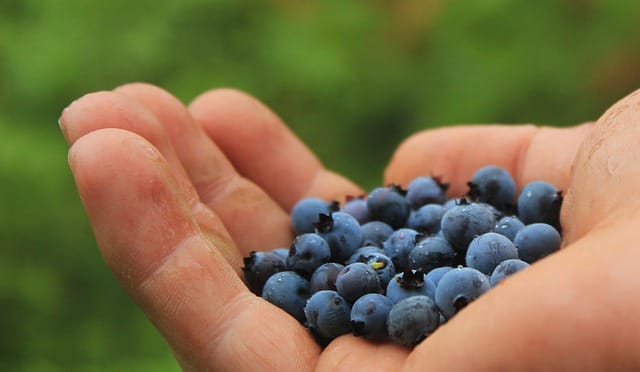
Signs of Ripeness: Identifying the Perfect Time to Harvest
Patience is a virtue, especially for harvesting blueberries. Unlike some fruits that ripen after being picked, blueberries reach their peak flavor and sweetness only when fully ripened on the plant. How can you tell if your blueberries are ready for harvest?
Here are a few telltale signs:
- Color: Ripe blueberries should be a deep, uniform blue with no hint of green or red.
- Texture: Gently squeeze a blueberry between your fingers. It should be slightly soft and plump but not mushy.
- Taste: The ultimate test! Pop a blueberry in your mouth and savor the flavor. It should be sweet and slightly tart, with no hint of bitterness.
Harvesting Techniques: Preserving Fruit Quality and Plant Health
Once you’ve determined that your blueberries are ripe, it’s time to harvest them with care. Gently pluck the berries from the cluster, careful not to damage the plant or the remaining berries. If a berry doesn’t come off quickly, it’s not yet ready.
Avoid pulling or tugging on the berries, as this can damage the plant and reduce future yields. Instead, use a gentle twisting motion to detach the berries.
Extending the Harvest: Succession Planting for Continuous Blueberry Delights
If you’re like me, you can’t get enough of fresh blueberries! Consider succession planting to extend your harvest and enjoy a continuous supply of these delicious fruits. This technique involves planting blueberry varieties with different maturity dates, ensuring that you have ripe berries throughout the growing season.
For example, you could plant blueberry varieties in early-season, mid-season, and late-season containers. This way, you’ll have a steady stream of fresh blueberries from early summer to late fall.
By following these harvesting tips and incorporating succession planting, you can maximize your blueberry yield and enjoy an entire season of these delightful fruits.
Troubleshooting Common Problems
Even with the best intentions and care, blueberry container gardens can sometimes encounter a few hiccups. But fear not, fellow gardeners! I’m here to equip you with the knowledge to diagnose and address common problems that may arise.
Yellowing Leaves: Causes and Solutions
If you notice your blueberry plant’s leaves turning yellow, it’s a sign that something isn’t quite right. The most common culprit is chlorosis, a condition caused by a lack of chlorophyll, the pigment that gives plants their green color.
Chlorosis in blueberries is often caused by iron deficiency. Remember we mentioned blueberries needing acidic soil. Well, if the pH of your potting mix is too high (above 5.5), iron becomes less available to the plant, leading to yellowing leaves.
To correct this issue, you can lower the pH of your potting mix by adding sulfur or iron sulfate. You can find our recommended products here. Be sure to follow the instructions on the product label carefully.
Another cause of yellowing leaves is over-watering. If the soil is constantly soggy, the roots can’t get enough oxygen, leading to rot and yellowing leaves. To prevent this, ensure proper drainage in your container and avoid excessive watering.
Pests and Diseases: Identification and Treatment
While blueberries are relatively resistant to pests and diseases, they can occasionally fall victim to unwanted visitors. Some common blueberry pests include:
- Aphids: Tiny, pear-shaped insects that suck sap from plants, causing stunted growth and distorted leaves.
- Scale insects: Small, immobile insects that attach themselves to plant stems and leaves, feeding on sap.
- Birds: While not technically pests, birds can be a nuisance, pecking at ripe blueberries and damaging your harvest.
If you see pest damage, there are several options for control. Natural pest control techniques, such as handpicking pests or using insecticidal soap, are a good starting point. If organic methods don’t work, talk to a local garden center about a problem. Many times, they will know exactly what will fix your problem. Personally, I try to stay organic as long as possible. However, if a small problem in one part of my garden appears to spread, I will go to extreme lengths to control it. If you have a problem with one plant in a container, one of the first things you should do is move it away from your others. This will isolate the problem, whether a pest or disease, and let you get it under control without risking contamination with your other plants.
As for diseases, blueberries can be susceptible to powdery mildew and leaf spot. Powdery mildew appears as a white, powdery coating on leaves, while leaf spot causes brown or black spots on leaves.
To prevent diseases, ensure good air circulation around your blueberry plants and avoid overhead watering. If you notice any signs of disease, you can treat them with organic or chemical fungicides.
Slow Growth: Diagnosing and Addressing the Issue
If your blueberry plant grows at a snail’s pace, several underlying causes could exist. One possibility is nutrient deficiency. If your plant isn’t getting enough of the essential nutrients it needs, it won’t grow as vigorously.
To address this, ensure you’re regularly fertilizing your blueberry plant with a balanced fertilizer. You can also conduct a soil test to determine if any specific nutrient deficiencies must be addressed.
Another cause of slow growth is poor drainage. If the roots sit in soggy soil, they can’t absorb nutrients efficiently, leading to stunted growth. Make sure your container has good drainage and avoid over-watering.
Finally, lack of sunlight can also contribute to slow growth. To thrive, blueberries need at least 6-8 hours of direct sunlight daily. Without enough sun, it won’t grow as quickly.
Identifying and addressing these common problems ensures that your blueberry container garden stays healthy and productive.
Blueberries, Berries, and Beyond! Everything you need to know about container gardening for blueberry plants!
Well, there you have it, folks! We’ve covered container gardening for blueberries, from choosing a container to solving common issues. I hope you’ve learned a lot and feel empowered to embark on your own blueberry-growing adventure.
Remember, even if you don’t have a sprawling backyard, you can still enjoy the sweet taste of homegrown blueberries. Container gardening makes it possible for anyone to cultivate these delightful fruits anywhere. So, what are you waiting for? Grab your gardening gloves, find a sunny spot, and start your blueberry container garden today!
With patience, care, and the knowledge you’ve gained from this blog post, you’ll be harvesting a bountiful crop of blueberries in no time. And who knows, you’ll inspire your friends and neighbors to join the fun!
Happy gardening, and may your blueberries be berrylicious!
Disclaimer: This post is for informational purposes only and should not be construed as health, wellness or nutrition advice. Please see our full disclaimers here.

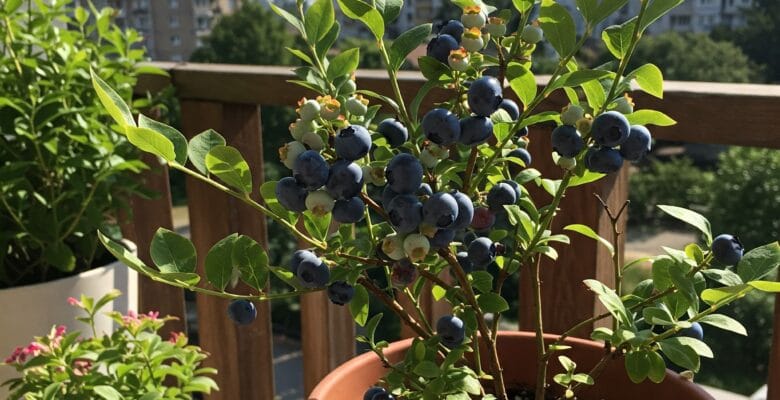
Leave a Reply